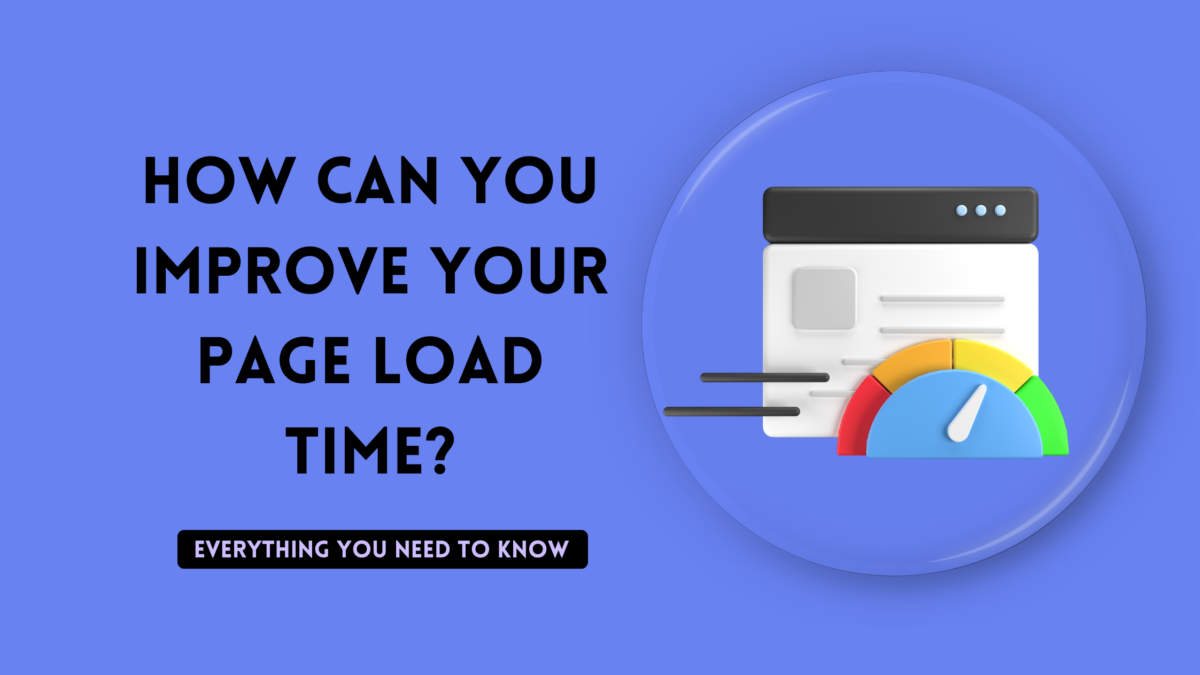What is Page Load Time? Improve Your Page Time
You must have visited a website that was taking a lot of time to load, and you left for some other website. This is a very common problem associated with websites, which is often put on the backseat.
Page load time is the speed at which your website loads and the web content appears on the device of the user. It is an important metric when we talk about the web performance of a website.
If the website takes a long time to load, the users can switch back to another website. This can result in a negative impact on the website and the user experience. To make sure this doesn’t happen, developers optimize the website.
There are many ways to optimize the website and improve page load time. In this blog, we will learn about how we can achieve an ideal page load time and keep the website healthy.
-
How to calculate the website speed or page load time?
-
Why Does Page Load Time Matter?
-
How to Optimize Your Website to Improve the Page Load Time?
How to calculate the website speed or page load time?
There are different ways you can calculate the speed of your page. Different variables determine the speed and reliability of the page.
There are two basic categories of page speed:
Full Page Load Time: The amount of time needed for all page elements—images, scripts, and styles—to load fully.
Time to First Byte (TTFB): The amount of time it takes for the first byte of data to arrive in the browser from the server.
Website owners can try platforms like Google PageSpeed Insights, Pingdom, and WebPage Test to measure the speed of the website.
Why Does Page Load Time Matter?
Page load speed can impact a lot of things, like the user experience and conversion rate. These are important metrics when calculating business strategies for the upcoming year.
Statistics show that a slower page speed can make 40% of the users leave the website. A slower page rate can result in a larger bounce rate, which results in a loss of customers and leads.
This also affects the SERP rankings. Search engines use page load speed as a ranking criterion. A website with high speed has a greater chance of appearing on the website as compared to a slow website.
Page speed can have a significant effect on conversion rates for e-commerce websites. A mere one-second delay can cause a 7% decline in conversions and lower customer satisfaction.
How to Optimize Your Website to Improve the Page Load Time?
Website owners can keep these parameters in mind to keep the website’s speed in check.
- Optimizing the Images:
Depending on which image you use, it can take a lot of time to load. Images with a smaller size tend to take less time as they require less bandwidth to show up on the device. Try reducing the resolutions and dimensions of the image while uploading rather than just reducing the size in the HTML or CSS files. - Minify the HTML, JavaScript, and CSS
Minification is the process of removing extraneous characters from code, such as comments and spaces, without impairing its functionality. You can minify your code with the aid of programs like HTMLMinifier, CSSNano, and UglifyJS. - Reduce the Amount of HTTP Requests:
To access any asset on the website, the webpage has to take a roundtrip from the server and fetch the file. This adds up to a lot of time taken to display the page. - Reduce the HTTP requests: To cut down on HTTP requests, find which assets are taking the most time to load and work on it. CSS sprites should be used for frequently used images, and JavaScript files should be combined.
- Web Hosting Optimization:
Select a reputable hosting company with quick server response times. For improved performance, think about utilizing a virtual private server (VPS) or dedicated server. - Make use of lazy loading:
Resources that are not necessary, such as movies and images, are loaded later on when they are needed thanks to lazy loading. This reduces initial page load time and improves performance. - Reduce Redirects:
Each redirect creates additional HTTP requests, which results in an increase in the page load time. Periodically scanning websites for unnecessary redirects can help identify useless redirects and increase the website speed.
Page load time is a critical aspect of web performance that impacts user experience, SEO rankings, and conversion rates. By understanding what page load time is and implementing best practices to optimize it, you can ensure that your website provides a fast, seamless experience for your users.

